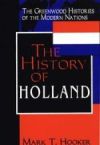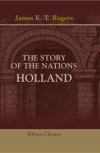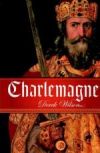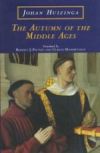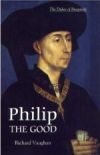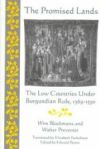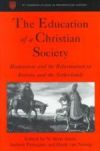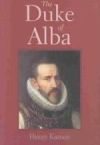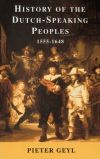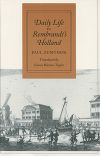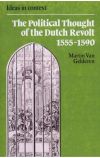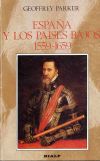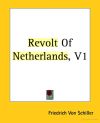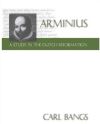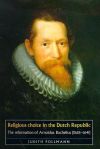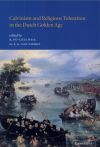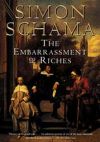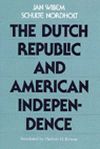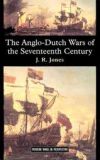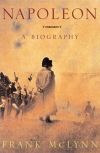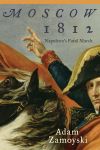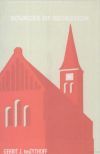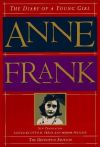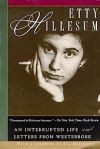When Charlemagne's empire fell apart, most of what is now The
Netherlands became part of the Holy Roman Empire. Though
nominally part of the empire, effectively the area consisted of a
number of more or less independent feudal states that were
usually at war with each other.
Through conquests and marriage politics, most of The
Netherlands (including the Southern Netherlands, current-day
Belgium) were eventually united under the duke Philip the Good of
Burgundy. Philip's great-grandson, Philip the Handsome, married
the Spanish princess Joanna of Castile (later known as Joanna
the Mad, or Juana la Loca). After the death of several
of Joanna's relatives she unexpectedly became the heir to the
Spanish throne.
|
Derek Wilson,
Charlemagne  (2006). (2006).
A new biography of the famous European emperor.
|
|
Johan Huizinga,
The Autumn of the Middle Ages  . .
Seminal book on life in and the culture of France and the low
countries in the 14th and 15th century.
|
|
Richard Vaughan,
Philip the Good: The Apogee of Burgundy  . .
Part of the History of Valois Burgundy series, this
book discusses Burgundy during Philip the Good's long reign
(1419-1467). By the end of this era, much of The Netherlands had
come under his control.
|
|
Willem Pieter Blockmans and Walter Prevenier,
The Promised Lands: The Low Countries Under Burgundian Rule,
1369-1530  . .
From the back cover:
"They were, in the words of one contemporary
observer, "the Promised Lands." In all of Europe, only northern
Italy could rival the economic power and cultural wealth of the
Low Countries in the later Middle Ages.
In The Promised Lands, Wim Blockmans and
Walter Prevenier trace the relations between the cultural and
economic developments of the Low Countries and the political
evolution of the region under the rule of the dukes of
Burgundy."
|
Philip the Handsome, son of Holy Roman Emperor Maximilian I of
Habsburg, had inherited the Low Countries from his mother, Mary
of Burgundy. Their son Charles, born in Ghent in 1500, inherited
Spain, the Low Countries, Austria, and parts of Italy. In 1530 he
became Holy Roman Emperor Charles V. Through conquests in the
Americas and (to a lesser extent) Asia, he ruled the famous
imperio en el que nunca se pone el sol, the empire on
which the sun never sets (a phrase that was later also used for
the British empire).
Charles V treated the Low Countries as an autonomous entity,
separate from his French and German possessions.
In the early years of the 16th century, the reformation
started. Calvinism gained popularity in France (the
Huguenots) and spread into the Low Countries, Lutheranism
became popular in Germany. Charles V, and his successor Philip
II, considered it their duty to suppress protestantism with harsh
measures. This lead to resentment in The Netherlands, and in the
1560s, the situation escalated. After a number of incidents,
Philip sent an army, lead by Fernando Álvarez de Toledo,
duke of Alba. Alba set up a special court (Raad van
Beroerten, or Council of Upheavals, quickly nicknamed
bloedraad, blood court) that judged and executed more than
one thousand people in a few months. Among them were the count of
Hoorne and the count of Egmont, Catholic nobles who were loyal to
the King of Spain. They were arrested and executed for high
treason.
|
Johan Huizinga,
Erasmus and the Age of Reformation  . .
Classic biography of Erasmus.
From the back cover:
"The eminent Dutch historian, Johan Huizinga
(1872-1945) has a special sympathy for the complex, withdrawn
personality of Erasmus and for his advocacy of intellectual and
spiritual balance in a quarrelsome age.
Written as a companion to Huizinga's masterwork
The Waning of the Middle Ages and first published in 1924,
this biography of the sixteenth-century scholar / humanist has
rightfully become a classic."
|
|
N. Scott Amos, Andrew Pettegree, and Henk F. K. van Nierop
(Editors),
The Education of a Christian Society: Humanism and the
Reformation in Britain and the Netherlands : Papers Delivered to
the Thirteenth Anglo-Dutch Historical Conference  , St. Andrews
Studies in Reformation History. , St. Andrews
Studies in Reformation History.
|
|
Henry Kamen,
The Duke of Alba  . .
Biography of Fernando Álvarez de Toledo, duke of Alba
(1507-1582).
"Kamen examines the early years of Alba's life, his
travels over the whole of Europe, and the complex military and
political career that made him Spain's leading general of the
imperial age. Drawing on the duke's rich and expressive surviving
correspondence, Kamen explores Alba's beliefs and considers his
infamous actions within the contexts of his time and of the
monarchs-Emperor Charles V and King Philip II of Spain-whom he
served."
|
The revolt, religious conflicts and the
Golden Age (1568-1672)
William of Orange, who had fled the country before Alba
arrived, invaded in 1568. The Battle of Heiligerlee, in May 1568,
is generally regarded as the beginning of the Dutch revolt, that
ended 80 years later with the Treaty of Münster. The revolt
is often called the eighty years' war. After some initial
successes, the revolt seemed to peter out, but some events in
1572 (most notably, the introduction of a 10% tax) caused support
for the rebels to grow again, and many cities declared themselves
loyal to the revolt. The siege of Antwerp in 1584 and its fall to
the Spanish army in 1585 caused a split in The Netherlands: The
south came under the control of Spain, the north successfully
fought for independence.
In the late 1580s, the seven northern provinces effectively
became an independent republic: The Republic of the Seven
United Netherlands, also known as the Dutch Republic,
or the United Provinces.
A ceasefire in 1609 gave the Dutch the chance to fight out
some internal conflicts: A religious conflict between Arminius
and Gomaris became a political conflict between their followers.
The conflict escalated and prominent followers of Arminius were
either executed (Johan van Oldenbarnevelt, in 1619) or fled the
country (Hugo Grotius, in 1621).
War continued in 1621, and lasted until the Treaty of
Münster in 1648. The Dutch Republic was recognized as an
independent state and retained control over the territories that
were conquered in the later stages of the war. Recognition came
rather late, as by 1648 the Dutch Republic was an economic and
military superpower, in the midst of the Golden Age. The Republic
had become the most important trading centre of the world, the
Dutch East India Company, founded in 1602, was by far the largest
company in the world, and the Republic had several colonies in
Asia and the Americas.
The Golden Age, that started around 1600 and lasted until
1672, was also an era of artistic activities. Rembrandt, Vermeer,
Frans Hals, Paulus Potter and Jan Steen painted their masterpieces, and
architects Hendrick de Keyser, Jacob van Campen and Pieter Post
built their palaces. Prominent scientists included Simon Stevin,
Jan Leeghwater, Hugo Grotius, Christiaan Huygens, Baruch de
Spinoza, and Antony van Leeuwenhoek.
History of the Dutch Republic
|
Pieter Geyl,
History of the Dutch Speaking Peoples 1555-1648  . .
Two books in one volume. The first, The revolt of The
Netherlands, discusses the revolt's preamble and the revolt
itself up to the 1609 truce. The second, The Netherlands in
the seventeenth century, starts with the truce and treats the
Golden Age.
From the back cover:
"In this superb panorama of politics and war, Geyl
tells the epic story of the Netherlanders' heroic struggle
against the might of Spain and the rise and the establishment of
the Dutch Republic. He describes the uneasy truce with Spain that
follows, the arrest and execution of Oldenbarneveldt, the
resumption of war in 1621, the uncertain alliance with France,
and the eventual establishment of Dutch independence in
1648."
|
|
Jonathan Israel,
The Dutch Republic: Its Rise, Greatness, and Fall
1477-1806  (1995). (1995).
Pivotal work by Jonathan Israel on the history of the Dutch
Republic, from the revolt's preamble to the revolutions and the
fall of the republic.
|
|
Paul Zumthor,
Daily Life in Rembrandt's Holland  (1962)
(translation of La Vie quotidienne en Hollande au temps de
Rembrandt (1959), transl. Simon Watson Taylor). (1962)
(translation of La Vie quotidienne en Hollande au temps de
Rembrandt (1959), transl. Simon Watson Taylor).
Dutch society in Rembrandt's time.
|
The revolt
|
Dame C.V. (Veronica) Wedgwood,
William the Silent. William of Nassau, Prince of Orange
1533-1584  (1944). (1944).
Biography of William of Orange (also known as William the
Silent, not to be confused with his great-grandson William of
Orange who became king of Great Britain and Ireland).
|
|
Geoffrey Parker,
The Army of Flanders and the Spanish Road, 1567-1659
 (2nd edition
2004). (2nd edition
2004).
"Using a unique combination of surviving records,
[Parker] presented strikingly the logistical problems of fighting
wars in early modern Europe, and demonstrated why Spain failed to
suppress the Dutch Revolt."
|
|
Martin van Gelderen,
The Political Thought of the Dutch Revolt 1555-1590
 (2002). (2002).
A study of the development of political thought during the
preamble and early days of the Dutch revolt.
|
|
Geoffrey Parker,
Spain and the Netherlands, 1559-1659: Ten studies  . .
Geoffrey Parker, España y los Países Bajos,
1559-1659. Diez estudios (1986).
A collection of ten essays on the Dutch revolt.
|
|
Johann Christoph Friedrich von Schiller,
The Revolt of the Netherlands  . .
Johann Christoph Friedrich von Schiller, Geschichte des
Abfalls der Vereinigten Niederlande von der spanischen
Regierung (1788).
Classic work by the famous German poet and dramatist,
Friedrich Schiller, on the Dutch revolt.
Available as a free e-book from the Project Gutenberg.
|
Reformation and religious conflicts
|
Carl Bangs,
Arminius - A Study in the Dutch Reformation  . .
Arminius disagreed with the Calvinist doctrine on a few
points, but especially on predestination. This book presents
Arminius' ideas.
|
|
Robert E. Picirilli,
Grace, Faith, Free Will: Contrasting Views of Salvation:
Calvinism and Arminianism  . .
This book discusses the issues that divide the followers of
Arminius and the stricter Calvinists, from a mostly Arminianist
point of view.
|
|
Judith Pollmann,
Religious Choice in the Dutch Republic: The Reformation of
Arnoldus Buchelius  . .
Why did people in the Dutch Republic choose a certain
religion, and what were the consequences of this decision for
their daily lives? The protagonist of this book, Arnoldus
Buchelius (1565-1641), a lawyer, was raised a catholic, was
without religious affiliation for some time, then became a
Libertine Protestant, and finally became a Contra-Remonstrant
Calvinist.
|
|
R. Po-chia Hsia and Henk van Nierop (editors),
Calvinism and Religious Toleration in the Dutch Golden
Age  . .
A collection of scholarly essays.
|
Golden age
|
Simon Schama,
The Embarrassment of Riches: An Interpretation of Dutch
Culture in the Golden Age  . .
The wealthy upper and middle classes of the Dutch Golden Age
lived in luxury and opulence. How did they reconcile this life
style with their Calvinist views of austerity? Simon Schama
investigates.
|
|
J. L. Price,
The Dutch Republic in the Seventeenth Century  . .
"The Dutch Republic emerged from the epic revolt of
the Netherlands against Spanish rule in the late sixteenth
century and almost immediately became a major political force in
Europe. In this book, Leslie Price--an acknowledged expert in the
field--shows how this extraordinary new state, a republic in a
Europe of monarchies, was able to achieve such successes despite
the burdens of the Eighty Years War with Spain, which only came
to a definitive end in 1648. The engine behind these achievements
was the phenomenal growth of the Dutch economy which, within a
few decades, had become the most powerful in Europe. This book
offers a concise but penetrating survey of the major features of
Dutch history in this period, challenging previous
interpretations and showing how the economic boom of the late
sixteenth and early seventeenth centuries produced a vigorous
society that was able to combine religious pluralism with
relative political stability and rapid social change with a
remarkable vitality."
|
Decline of the Dutch republic
(1672-1795)
1672 is known as the rampjaar, disaster year. England,
France, Cologne and Münster declared war. The Republic was
forced to fight a three-front war and the end of the Republic
seemed nigh. William III of Orange (the great-grandson of William
of Orange who led the Dutch revolt in its early days) was
appointed stadtholder (head of state). Under his leadership, the
Republic surprisingly resisted the invaders and signed treaties
with all of them. After the Glorious Revolution 1688/1689,
William and his wife Mary became king and queen of England, and
England became an ally for nearly a century.
The rampjaar marks the end of the Golden Age. The Dutch
economy stagnated in the late 17th century, and a long period of
slow decline had set in. This was accelerated by the fourth
Anglo-Dutch war (1780-1784).
A group of dissenters, the patriots, tried to seize
power in 1787, but failed. Many patriots fled to France.
French era (1795-1813)
In 1795, a French army lead by Pichegru invaded the Dutch
Republic, and with their support a second revolution overturned
the old regime. After a chaotic period France (now under
Napoleon) seized power in 1806, and Napoleon installed his
brother Louis (or Lodewijk, as he is known in The
Netherlands) as king. In 1810 The Netherlands were annexed by
France.
An estimated 15000 conscripted Dutch soldiers had to join
Napoleon's Russian invasion. Not many of them returned.
19th century (1813-1914)
The French empire collapsed after the failed 1812 Moscow
campaign, and The Netherlands regained their independence. The
new Kingdom of The Netherlands included the former southern
Netherlands. The northern and southern Netherlands had been
estranged since the late 16th century, so it should be no
surprise that merging them into a single nation did not work out.
The southern Netherlands revolted in 1830 and founded their own
nation, Belgium.
The secession from the Dutch Reformed Church in 1834 was
followed by the first wave of mass emigration, in the years
1845-1847. The afgescheidenen (secessionists) founded
Dutch settlements in Michigan (Holland, founded by A.C. van
Raalte), and Iowa (Pella, founded by H.P. Scholte).
|
Gerrit J. Tenzythoff,
Sources of Secession: The Netherlands Hervormde Kerk on the
Eve of the Dutch Immigration to the Midwest  . .
The secession from the Dutch Reformed Church started of the
first wave of mass emigration (1845-1847), mainly to the Midwest:
Michigan (Holland, Grand Rapids), Iowa (Pella), and Illinois
(Hooge Prairie). This book discusses its preamble and causes.
|
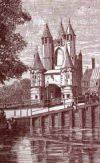  Engraving from Through Holland
Engraving from Through Holland
Charles W. Wood,
Through Holland  (1877). (1877).
Travel account of a journey through The Netherlands,
illustrated with 57 wood engravings. A wonderful picture of The
Netherlands, and Dutch society, in the second half of the 19th
century.
|
Interbellum and world wars
(1914-1945)
After the Belgian uprising, The Netherlands managed to steer
clear of all European wars and conflicts. They remained neutral
during and after the great war (1914-1918), until Germany invaded
in May 1940. The Dutch army capitulated to the superior German
army after five days, and a five year occupation followed.
|
Anne Frank,
The Diary of a Young Girl  . .
The world-famous diary of Anne Frank, written while in hiding
from the Nazis.
|
|
Etty Hillesum,
An interrupted life and Letters from Westerbork
 . .
An interrupted life is a diary of a young Jewish woman
during the holocaust - not as famous as Anne Frank's diary, but
just as impressive.
Letters from Westerbork is a collection of letters Etty
wrote from the transit
camp in Westerbork - the last stop before Auschwitz for her
and many other Dutch Jews. She wrote the letters in 1942, while
she was working as a volunteer in the camp. In 1942 or 1943 she
was interned herself. She was transported to Auschwitz in
September 1943, and died there later that year.
|

